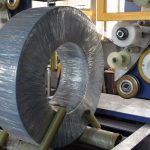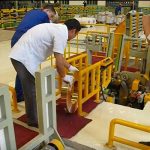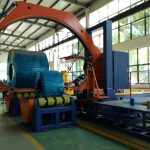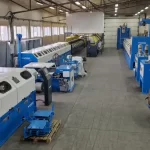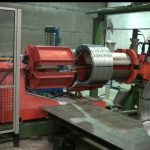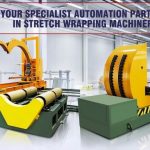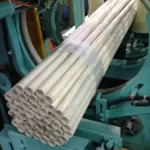Future-Proofing Your Business with a Steel Coil Packing Line Investment
- Future-Proofing Your Business with a Steel Coil Packing Line Investment
- 1. The Growing Importance of Automation in Manufacturing
- 2. Understanding Steel Coil Packaging Lines: What They Do
- 3. Benefits of Investing in a Steel Coil Packing Line
- 4. Common Challenges in Manual Steel Coil Packaging
- 5. Key Features to Look for in a Steel Coil Packing Line
- 6. The Role of Steel Coil Packing Lines in Supply Chain Optimization
- 7. How Automation Reduces Packaging Costs
- 8. The Environmental Impact of Automated Packing Lines
- 9. Key Considerations Before Investing in a Steel Coil Packing Line
- 10. Real-World Examples of Success with Steel Coil Packing Lines
- 11. Future Trends in Steel Coil Packaging Technology
- 12. Conclusion: Why a Steel Coil Packing Line is the Best Investment for Your Business
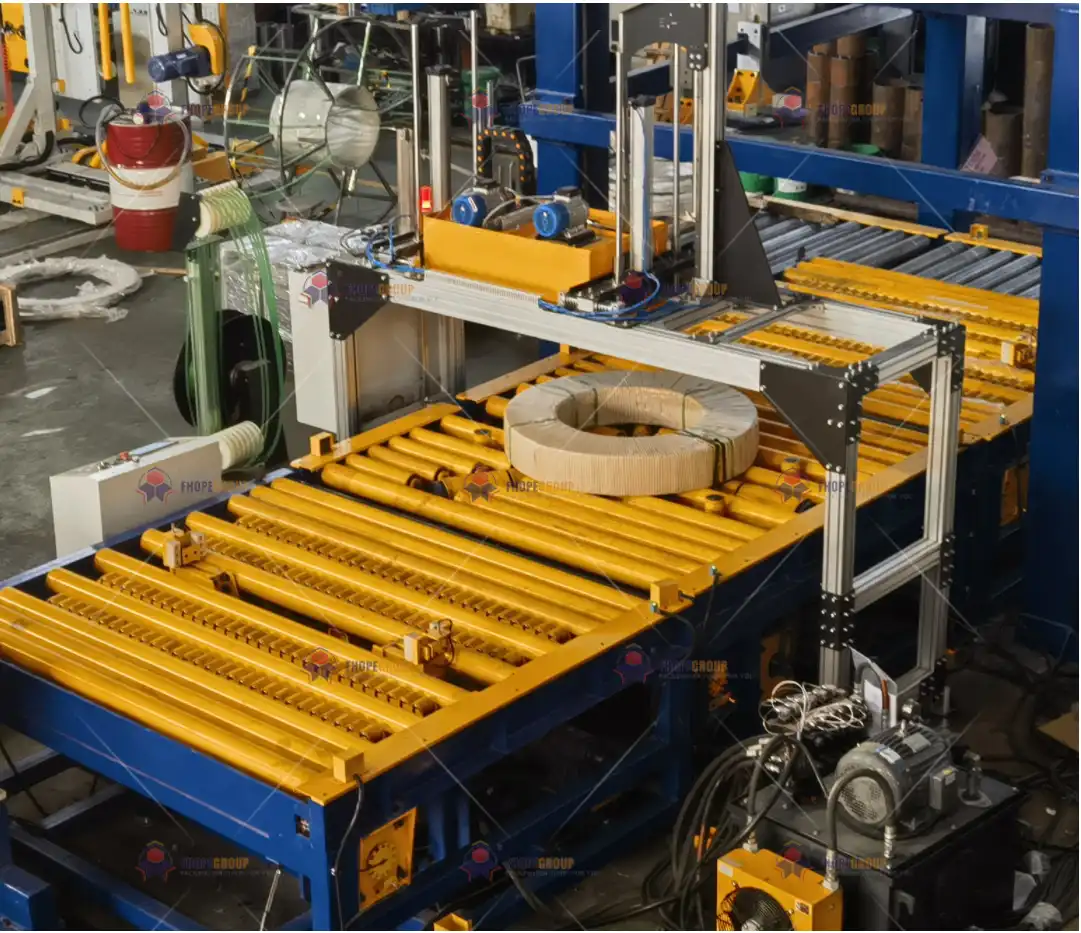
In today’s highly competitive manufacturing landscape, businesses face the constant challenge of staying ahead. One way to future-proof your business and maintain a competitive edge is by investing in advanced automation solutions, like a steel coil packing line. In this guide, we’ll explore why steel coil packaging systems are becoming essential, how they can revolutionize your production line, and why this investment will safeguard your business for years to come.
1. The Growing Importance of Automation in Manufacturing
With increasing demand for efficiency and precision, automation is no longer a luxury but a necessity. Companies that rely on outdated, manual packaging methods are quickly falling behind. The key to staying relevant in this fast-paced environment is to embrace automation technologies that streamline operations, reduce costs, and improve safety.
Steel coil packing lines are one such solution that enhances productivity by automating the complex and often dangerous task of packaging large steel coils. By integrating a coil packing line, businesses can minimize manual labor, increase packaging speed, and ensure consistency in quality. In addition to that, a well-functioning packing line eliminates common issues like product damage, delays, and worker fatigue, all of which impact the bottom line.
2. Understanding Steel Coil Packaging Lines: What They Do
A steel coil packing line is a fully automated system designed to wrap, strap, and protect steel coils as they move through production. These machines handle tasks that once required multiple workers, reducing the need for manual intervention while increasing the overall speed and accuracy of the packaging process.
Key components typically include:
- Automatic coil wrappers for efficient, uniform wrapping
- Strapping machines to secure the coils tightly
- Conveyors to transport coils smoothly through the production process
3. Benefits of Investing in a Steel Coil Packing Line
When it comes to ROI (Return on Investment), a steel coil packing line can provide significant advantages. Here are the primary benefits your business will gain from such an investment:
- Enhanced Efficiency: By automating the packaging process, companies can package more products in less time, allowing for higher production outputs.
- Improved Safety: Steel coil packaging can be physically demanding and dangerous. Automation reduces worker exposure to heavy lifting, lowering the risk of injury.
- Cost Savings: While the upfront cost may seem high, automating coil packing reduces labor costs and minimizes errors that can lead to damaged goods.
- Consistency in Quality: Automated packing lines ensure that every steel coil is packaged to the same standards, minimizing the risk of human error.
4. Common Challenges in Manual Steel Coil Packaging
Businesses that rely on manual packaging processes face numerous challenges that affect their efficiency and product quality. Some of these include:
- Worker Fatigue and Injuries: Repeated manual handling of heavy steel coils leads to fatigue, injuries, and higher compensation costs.
- Inconsistent Packaging Quality: Human error in wrapping and strapping can result in uneven tension, leaving the coils vulnerable to damage during transport.
- Time-Consuming Processes: Manual packaging is slow, often causing production bottlenecks and delayed deliveries.
These issues can be mitigated or entirely eliminated with an automated steel coil packing line.
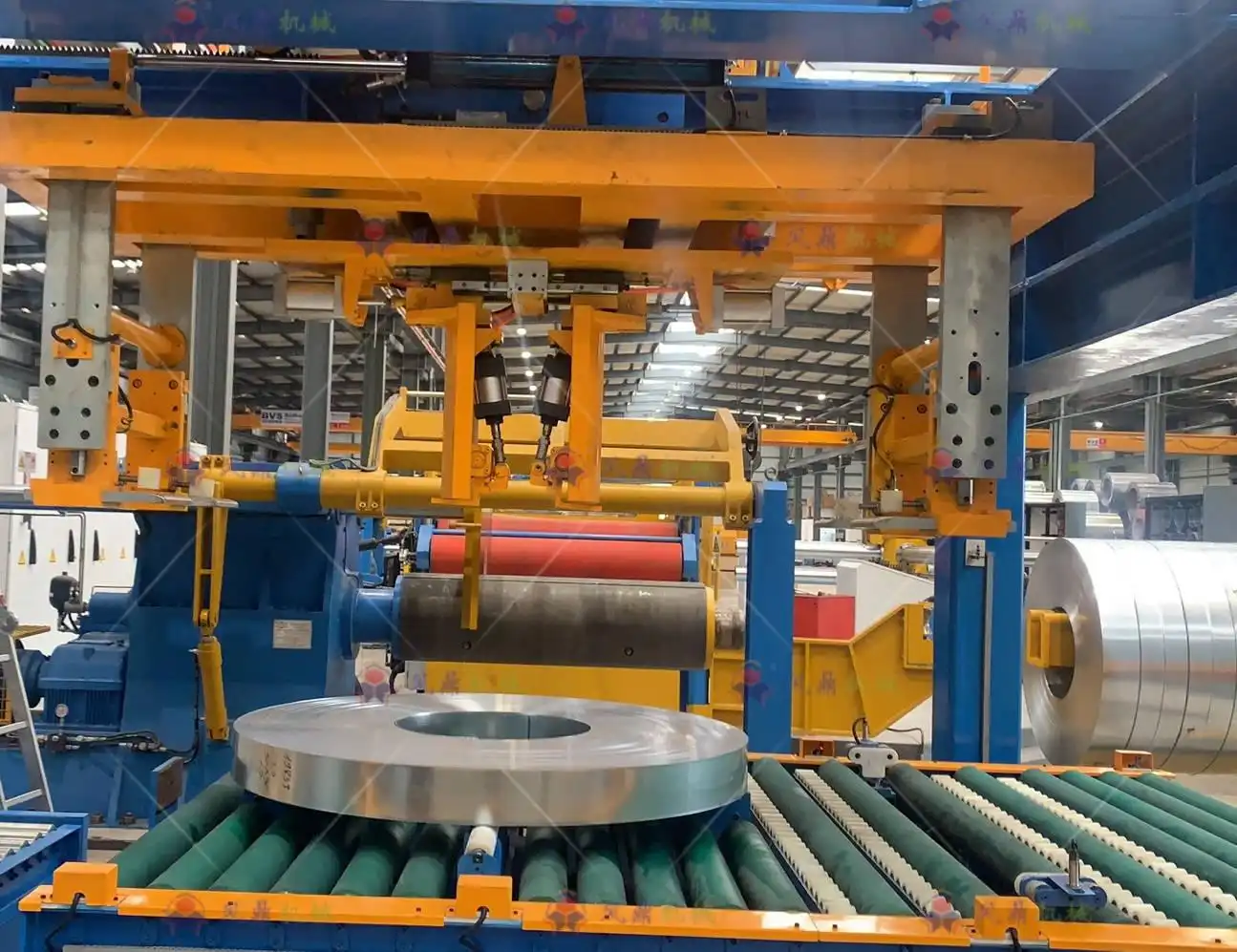
5. Key Features to Look for in a Steel Coil Packing Line
To maximize the benefits of your investment, it’s essential to choose a system that suits your business’s specific needs. Here are some key features to consider when selecting a steel coil packing line:
- Customizable Packaging Options: Look for machines that offer multiple wrapping materials (e.g., stretch film, VCI paper) and adjustable wrapping settings to suit different coil sizes and weights.
- High-Speed Operation: The faster the machine, the greater your production capacity.
- Durability: Since steel coil packaging lines are a significant investment, you need equipment that is built to last with minimal maintenance.
- Advanced Safety Features: Opt for machines with built-in safety mechanisms like sensors that detect potential hazards and automatic shutdown functions.
6. The Role of Steel Coil Packing Lines in Supply Chain Optimization
In modern manufacturing, supply chain optimization is crucial for business success. A steel coil packing line can play a pivotal role in this by ensuring faster packaging, reducing waste, and improving logistics efficiency.
Automating the packaging process helps prevent shipment delays caused by packaging bottlenecks and eliminates the risk of coils arriving at their destination in poor condition. In turn, this improves the overall flow of materials, ensuring that customers receive their products on time and in perfect condition.
This type of efficiency directly translates into better customer satisfaction and reputation management—two critical components for any business looking to future-proof its operations.
7. How Automation Reduces Packaging Costs
One of the most significant advantages of investing in a steel coil packing line is the reduction in operational costs. Businesses often overlook the long-term savings that automation offers, focusing only on the upfront investment. However, the reality is that automation drastically cuts costs over time by:
- Reducing Labor Costs: Automated packaging lines replace the need for manual labor in repetitive tasks like wrapping and strapping. This allows you to reallocate workers to more value-added tasks, or even reduce workforce size where feasible.
- Minimizing Material Waste: Human errors in manual packaging can result in wasted materials. An automated system, by contrast, uses precise calculations to apply just the right amount of wrapping and strapping materials, ensuring optimal usage.
- Decreasing Downtime: Machines don’t get tired or injured, which means fewer production stoppages and more continuous uptime, ultimately leading to faster turnaround times.
The savings you gain from increased efficiency, reduced errors, and less material waste can quickly offset the initial investment in the packing line. Over time, these savings contribute to a better ROI.
8. The Environmental Impact of Automated Packing Lines
Today, more companies are focused on sustainability and reducing their environmental impact. An automated steel coil packing line can help your business adopt greener practices in several ways:
- Efficient Use of Resources: Automated systems use fewer materials and energy to complete tasks, reducing the overall carbon footprint of your operations.
- Less Packaging Waste: Precise material usage means that there’s less excess waste, helping your business meet eco-friendly standards.
- Improved Longevity of Packaged Goods: By providing consistent, secure packaging, automated systems protect steel coils from environmental factors such as moisture, which can lead to corrosion and material wastage.
Adopting automation aligns with modern consumers’ and clients’ increasing demand for environmentally responsible business practices, positioning your company as a sustainability leader.

9. Key Considerations Before Investing in a Steel Coil Packing Line
Before making the leap to automation, it’s essential to evaluate a few factors to ensure you get the most out of your investment:
- Scalability: Does the packing line have the flexibility to grow with your business? Choose a system that can be easily upgraded or expanded.
- Integration with Existing Systems: Ensure that the new packing line will integrate smoothly with your current production and logistics systems to avoid bottlenecks and downtime during the transition.
- Total Cost of Ownership (TCO): Consider not only the initial cost of purchasing the machine but also ongoing expenses like maintenance, repairs, and energy consumption.
- Training and Support: Adequate training and manufacturer support are crucial for ensuring your team can effectively operate and maintain the packing line.
These considerations will help you avoid unexpected challenges and ensure that your investment delivers maximum long-term value.
10. Real-World Examples of Success with Steel Coil Packing Lines
Let’s take a look at how businesses across various industries have reaped the benefits of automating their steel coil packaging processes:
- Steel Manufacturers: One large steel producer in Europe integrated an automated steel coil packing line and saw a 40% increase in packaging speed while reducing labor costs by 25%. This allowed them to meet higher production demands without increasing staffing.
- Construction Material Suppliers: In Asia, a company specializing in building materials found that their new steel coil packing line reduced product damage during shipment by 30%, thanks to consistent and secure packaging. The machine also helped them achieve just-in-time delivery, improving their client satisfaction rates.
- Automotive Industry: An auto parts manufacturer in the United States implemented a steel coil packing line to meet the rising demand for high-quality, damage-free materials. The automation eliminated human errors and created a more streamlined supply chain, boosting their efficiency by 35%.
These real-world examples demonstrate how investing in a steel coil packing line can provide significant competitive advantages and improve operational outcomes.
11. Future Trends in Steel Coil Packaging Technology
As with all aspects of manufacturing, technology continues to evolve, and steel coil packaging is no exception. Here are a few trends on the horizon that will further enhance the value of automated packing systems:
- AI-Powered Packaging Lines: Artificial intelligence (AI) is being integrated into packaging systems to improve efficiency, accuracy, and predictive maintenance. AI can help machines self-adjust for different coil sizes and conditions, minimizing the need for human intervention.
- IoT Integration: The Internet of Things (IoT) is enabling manufacturers to monitor their packaging systems in real time. This technology allows for remote troubleshooting, predictive maintenance, and continuous performance optimization.
- Sustainable Packaging Materials: As businesses strive to reduce their environmental impact, there’s an increasing demand for biodegradable and recyclable packaging materials. Advanced packing lines will need to accommodate these materials without sacrificing quality or durability.
These innovations will continue to drive the evolution of steel coil packaging systems, ensuring that businesses remain efficient, cost-effective, and sustainable.
12. Conclusion: Why a Steel Coil Packing Line is the Best Investment for Your Business
In conclusion, investing in a steel coil packing line is not just about keeping up with today’s demands—it’s about preparing for the future. With the rise of automation, businesses that continue to rely on outdated manual packaging processes will struggle to compete. By automating your steel coil packaging, you can improve efficiency, reduce costs, enhance safety, and ensure consistent product quality.
Furthermore, with trends like AI, IoT integration, and sustainable materials shaping the future of manufacturing, investing in advanced packing technology positions your business as an industry leader. By future-proofing your operations, you’re safeguarding not only your current productivity but also your ability to scale and adapt in an ever-evolving market.
In a world where innovation is the key to survival, a steel coil packing line is an investment that will pay off for years to come, ensuring your business remains competitive, efficient, and ready for whatever the future holds.


